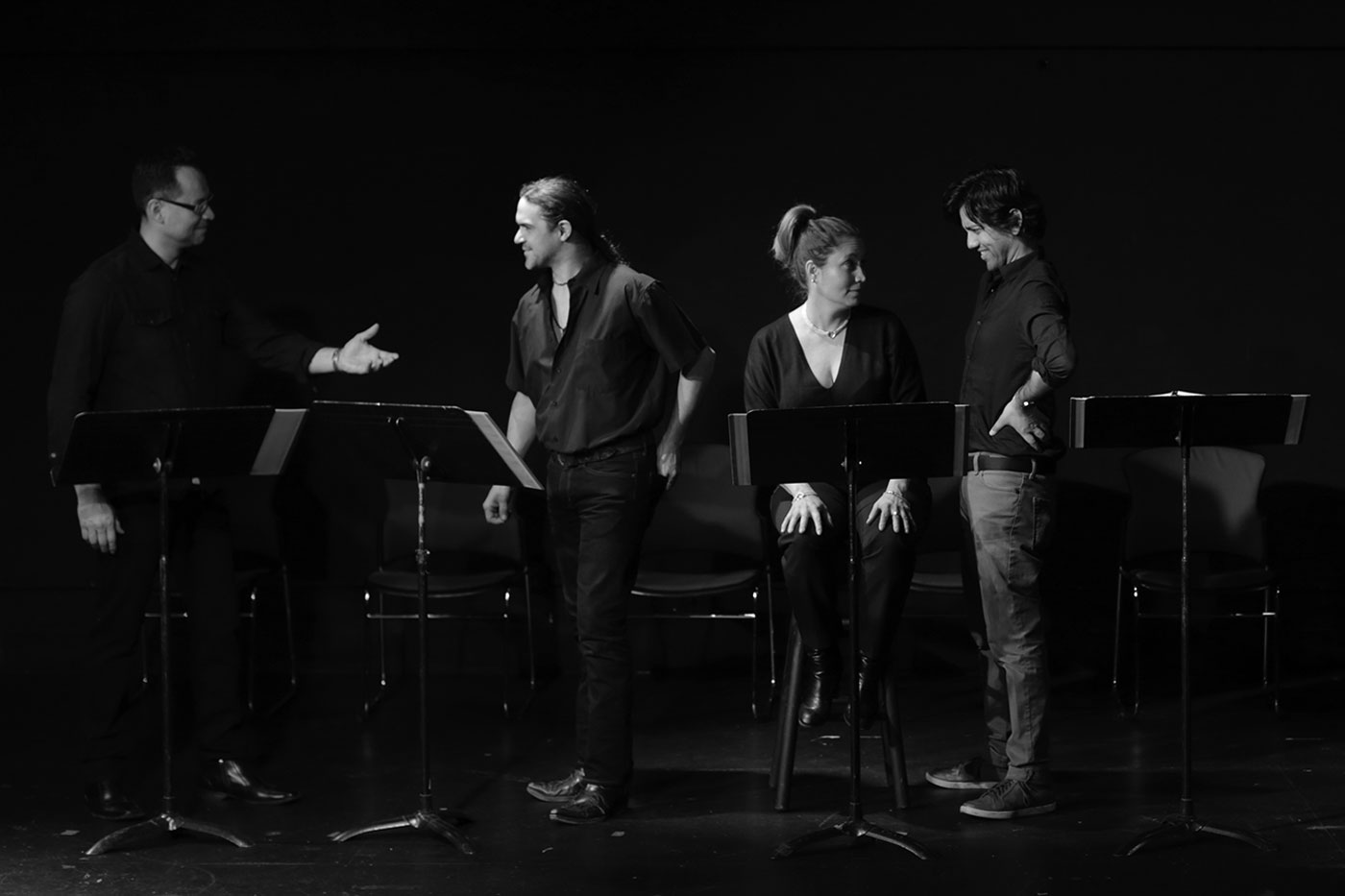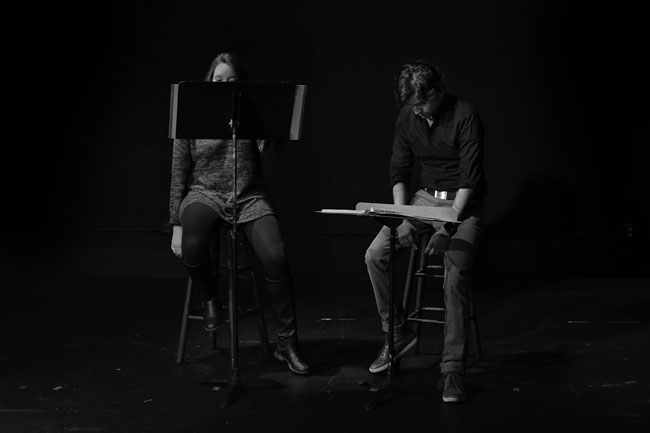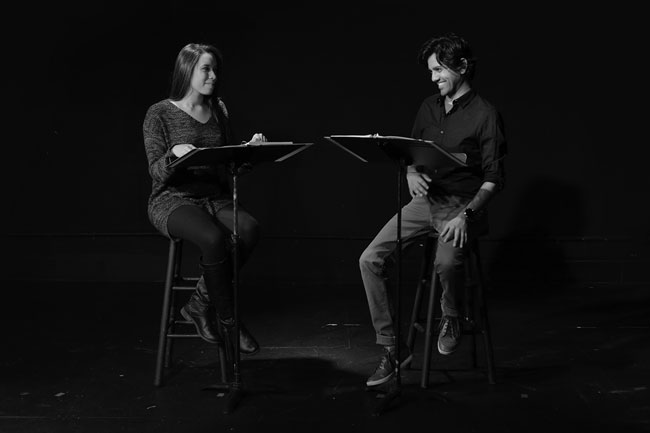
When I moved to New York City in the early 1980s, play readings were rare. In the rest of the country, they were practically unheard of. Now, public readings of new plays have grown into an international phenomenon. They are an essential component of the current model of new play development, and an almost inevitable step on the path to production.
As a playwright, director and Director of New Play Development at Queens Theatre, I’ve seen and been involved in countless readings. I firmly believe that first and foremost, readings should be presented to help the playwright. Yet I’ve seen many readings that served other needs, and were not helpful to the writers. I began to present “Play Readings: A Workshop for Directors, Playwrights and Actors” at various Kennedy Center American College Theatre Regional Festivals, in which I proposed a simple model for putting together an effective reading. I was contracted by Focal Press (now Routledge) to write a book based on the workshop – the first and only book on the subject, entitled “Play Readings: A Complete Guide for Theatre Practitioners.”
Writing the book was nowhere near as enjoyable as writing plays. While I held strong views, I didn’t want to sound too prescriptive. I found a way to address this by including quotes from theatre professionals who disagreed with me. That way, it would clear to readers that despite my preferences, there is no one right way to present a play reading (a term I prefer to “staged reading,” because most readings are not, in fact, staged.)
Among the many aspects of play readings that distinguish them from full productions of the plays is the use of music stands. Here is an excerpt from the book on that subject, adapted for this article.
Music stands are standard equipment for many play readings. They should be sturdy, with a solid “desk” (the upper part of the music stand, where the script rests) and a tripod at the bottom with legs close to the floor. Flimsy, lightweight music stands should not be used for readings: They are difficult to manipulate, and scripts can easily tumble off.
The best rationale for using music stands is that they free actors’ hands. Holding a script limits an actor’s ability to physicalize a character. And while holding scripts allows actors more freedom of movement than when positioned behind music stands, for audiences at a public play reading, the sight of actors walking about script-in-hand can look like they are rehearsing. A reading should not evoke a rehearsal. If directors decide against music stands, actors should be seated. Whether or not to use music stands, and how to arrange and manipulate them will affect the style and quality of the presentation.
The number and placement of music stands for a reading is determined by the director before rehearsal, which can be done efficiently with information about the venue and familiarity with the script. To determine how many stands are required, a director locates the scene in the play with the largest number of actors. Each actor in this scene will need a music stand, as will the stage directions reader.
The playing area should be large enough to accommodate all of the music stands. Plays with large casts need larger playing areas. The stands should be at least one foot apart, or further apart if the stage is larger and a greater distance suits the play. Actors should be able to gesture without hitting each other. In most cases, the distance between the music stands should be uniform. But stands can be placed in seemingly random positions. Or one music stand can be separated from the others, giving it prominence – whatever best serves the play.
With large-cast plays, when music stands are placed in a straight line, it is difficult for actors to look up from the script and make eye contact. Arranging music stands in a semi-circle, with the center of the semi-circle upstage permits actors to interact with actors who are not next to them.
The placement of the music stands in relation to the audience must also be precise. These positions are determined by the height of the stage, the slope of the seating rake and distance from the first row of the audience to the stage. If audiences are too close to the stands, they will not see the actors’ faces. Directors should check sightlines when arranging the semi-circle to be certain that the audience seated on the sides of the venue can see
the actors’ faces, particularly the two positioned at the downstage ends.
Incorrect height and use of music stands
The height of a music stand, which may need to be adjusted by every actor who uses it, should be positioned so that the actor does not have to look too far down to read the script. If music stands are too low, audiences will have a better view of the top of the actors’ heads. One of the three legs of the tripod at the bottom of the music stand should be pointed directly upstage. Actors use one foot to hold the music stand in place while lifting the desk with their hands. Placing one of the tripod legs directly upstage facilitates this.
Correct height and use of music stands.
When music stands are facing directly out and actors attempt to look at each other, the actors will need to look down to read their lines, and then look up and turn their heads to see the actor they are addressing. If one of the actors angles her music stand, she will be able to read the script and then look up at her fellow actor. If that actor’s music stand is not angled, she will need to look down at her script to read her lines, then look up and turn her head. When both music stands are angled, actors can read their lines and then look at up at their fellow actors easily. Actors experienced with Readings will often angle their music stands instinctively. There may be interpretive or stylistic reasons why actors in certain plays or certain scenes should not angle their music stands, and face directly out. Directors can determine in advance which plays or scenes benefit when actors angle their music stands and which do not. Actors should use caution when angling music stands. If a music stand is angled perpendicular to the other actor, the speaking actor will be in profile.
If there are three actors in the scene, the actors stage left and stage right can angle in their music stands in. The actor center stage can keep his music stand straight out. This arrangement allows all three actors to look down at their scripts and look up at their fellow actors easily.
Quality music stands are essential for quality readings. Actors should be able to raise and lower them without difficulty, and adjust the angles so the desks can be turned easily from side to side. Music stands should not be moved from their positions on the floor when manipulated, nor should they be picked up and relocated during a reading unless the move is purposeful. Actors lugging music stands across the stage look awkward. Music stands that require effort to raise or lower or that slip down after they have been raised can harm a reading. Theatres, labs and other organizations should not skimp. They need a sufficient number of sturdy, adaptable music stands on hand for large-cast readings. Also, given the specified placement and manipulation of music stands, and the movement of actors, music stands should be available for the entire rehearsal period.
The assignments of actors to specific music stands for each scene and the adjustments of the stands made by actors create revealing movement and compositions for a play readings. These simple techniques enhance the experience of the play for the audience.
To order or for more information about Play Readings, click here. For an excerpt on stage directions, click here. To learn about Rob’s plays, click here.
Photographs by Mac Premo and Adrianna Dufay, with assistance from Divya Gadangi. Actors: Angelica Avilés, Imran Shiekh.

Noël Coward’s Travels

Kate Chopin in New Orleans: Mother-Daughter Author Duo Collaborate on Historical Book



